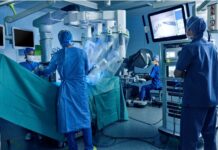New Delhi, June 06, 2020: World Brain Tumour Day is now celebrated annually on 8th June as a tribute to all brain tumour patients and their families. On this day we take this opportunity to discuss some basic facts and break the myths and misconceptions about brain tumours among the general population.
On November 25, 1884, Mr. Rickman J. Godlee performed the first recognized resection of a primary brain tumour, unfortunately the patient could not be saved. Although considered a dreadful disease for many decades, patients can expect a good quality of life with present advancements.
Brain tumours can be broadly classified to primary tumours which originate from neural elements within the brain itself, or they may represent spread of distant cancers from any other organ of the body like lungs, breast, kidney or prostate cancer. The incidence of central nervous system (CNS) tumours in India ranges from 5 to 10 per 100,000 populations with an increasing trend and accounts for 2% of malignancies. Although the exact cause of brain tumour is unknown, factors like high doses of ionizing radiation, family history of brain tumours long-term smoking, increase your risk of brain tumours.
They may present with very nonspecific complaints like headache, confusion, drowsiness, Nausea, Vomiting, Weakness, Gait Disturbance, seizures, visual changes and Speech problems. How quickly a brain tumour grows can vary greatly. The growth rate as well as location of a brain tumour determines how it will affect the function of your nervous system. Diagnosis of the tumours has become easy and we are seeing more and more patients coming in at early stages because of the wide availability of MRI, CT.
Most of these tumours are benign (noncancerous) and can be completely cured for life by surgery. In many cases of malignant (cancerous) tumours also, long-term survival is possible with accurate surgery, radiotherapy and oral chemotherapy.
We are able to plan the surgery and predict the functional outcomes to pinpoint accuracy with modern diagnostic modalities like high resolution MRI and Diffuse tensor imaging which give us a detailed picture of the brain including how the tumours is affecting the white matter tracts.
Modern adjuvants like high power intraoperative microscopes, intraoperative neuro navigation, neural monitoring make the maximal tumours resection safe and reduce the human error to negligible.
Tumour staging is now done on the basis of Molecular markers in addition to the conventional histopathological examination which helps us plan the radiotherapy and chemotherapy in the most effective manner. With the help of specially trained Neuro rehabilitation experts we are able to make patients return to their regular life within no time, thus with a positive attitude and support from friends and family we see no reason to be worried about this disease anymore.
Corporate Comm India(CCI Newswire)





















